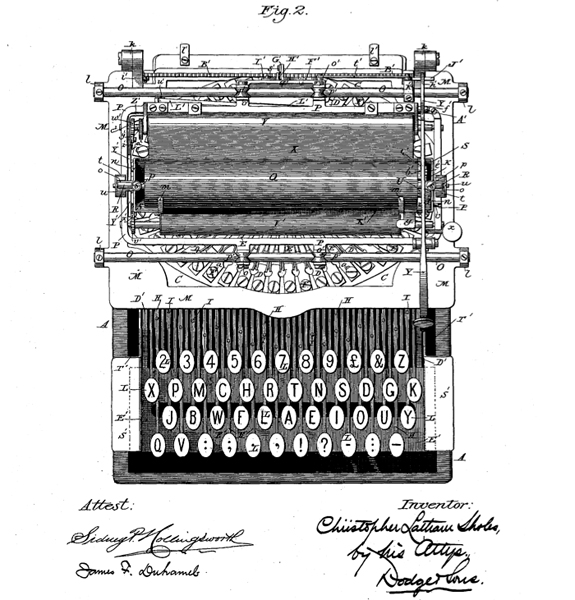We've been over the claims found everywhere including our very own Colemak front page, that QWERTY was constructed to prevent the jamming of the early mechanical typewriters' bars (thus forcing common bigrams apart as witnessed by TH and HE etc – but not ER which on the other hand was changed between versions of Sholes' layouts) and also so that salesmen could easily produce the word TYPEWRITER.
These claims have been bandied about, scrutinized and don't seem to stand too strongly anymore. For one, the jamming models would've been outdated in 1878 when Sholes patented the Sholes-Glidden layout that Remington put into production with their new models – certainly when it was made the de facto layout standard in 1893 by agreement between the biggest typewriter manufacturers. And the salesmen thing doesn't seem substantiated – it could very well be just an urban myth in the "it's so good it has to be true" genre.
I just found a quite interesting read about QWERTY history based on some more recent studies. Japanese researchers, apparently, have investigated how the QWERTY really came to be over several years of testing by morse code transcribers. These would need letters that have the same beginning in morse code to be close on the keyboard so that they could start hovering when they heard the beginning and then fall down on the right letter(s) quickly. Also, to keep up with the telegraph they couldn't afford the layout to be made for slowing you down obviously! That'd be just silly.
Now I don't claim that this is the (only) right answer, but as I said it's a good read for a keyboard freak. Also note the improved Sholes layouts that didn't make it once Remington had theirs in place – the one shown below seems more like the later optimized layouts (it's from 1889, 11 years after the QWERTY was patented). It reduces bottom row usage, bunches the vowels much like the Dvorak layout does and puts less common letters in the hard-to-reach spots. It'd be fun if anyone were to run that one through a modern metrics analysis! :)

I just *love* that image! And the signatures, so stylish and fin-de-siècle...
*** Learn Colemak in 2–5 steps with Tarmak! ***
*** Check out my Big Bag of Keyboard Tricks for Win/Linux/TMK... ***